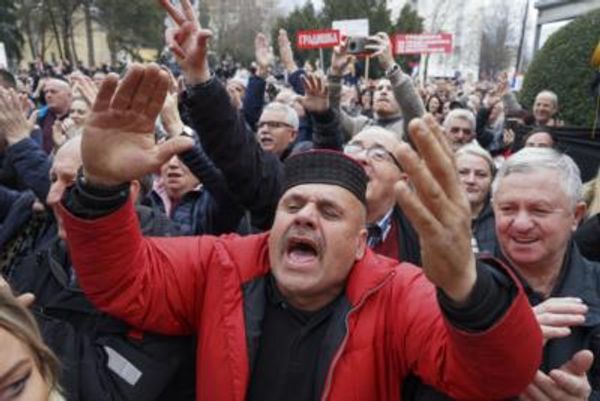July kicked off a strong market rally of the kind not seen since November 2020 and crowned a difficult first half. Large-cap growth and clean energy stocks picked up steam, leading some of the best mutual funds and ETFs to post impressive returns.
The 10-year U.S. Treasury yield shed 31 basis points to end the month at 2.67%. The yield curve — which tracks bonds of various maturities and their yields — inverted as the 10-year sank below the one-year yield. This usually signals a looming recession.
The Federal Reserve hiked the fed funds rate by another 75 basis points, while the GDP came in slightly negative for a second quarter in a row.
"It was probably surprising to a lot of investors that the broad equity markets rallied as much as they did," said Kristi Akullian, director of iShares investment strategy at BlackRock. "I think it's an almost unloved rally. I don't think a lot of investors were positioned for that specifically."
How Best Mutual Funds And ETFs Performed
U.S. diversified equity funds soared 8.45% in July, trimming their losses this year so far to 13.81%, according to Refinitiv Lipper data. The best mutual funds were equity leverage, as well as large, mid, multi and small-cap growth funds, bringing in 11%-plus returns.
Within sectors, the best performers were consumer services, science and technology, industrials, natural resources, and commodities specialty funds, up 10% or more in July. Except for commodities and natural resources, which are up 10% and 35.7% this year, the other sectors are still deep in the red for the year.
"Consumer discretionary has been one of the best-performing sectors to date," she said. "It makes sense, because ... it's obvious that people are traveling again, taking summer vacations and going to weddings."
She also pointed out that auto manufacturers have had a real ability to pass back higher costs. She believes we'll continue to be in a "living with inflation" environment for a while.
Looking Broader For Best Mutual Funds And ETFs
International markets also did well, with global growth and India region funds among the best global mutual funds, scoring 7% to 9% returns during the month. Most came close to erasing their second-quarter losses, but not quite entirely, and are still down 10% to 23% in the first seven months of the year.
In the ETF space, large-cap growth funds outperformed. Invesco S&P 500 High Beta, Fidelity Blue Chip Growth and Vanguard Mega Cap Growth were the best three ETFs in July, with returns from 13.5% to 15.7%. This year, however, high-dividend ETFs are still ahead of the pack.
Within sectors, clean energy ETFs were finally shining brightly in July. ALPS Clean Energy, Invesco WilderHill Clean Energy, Sprott Uranium Miners, SPDR S&P Semiconductor and Invesco Solar soared 20% or more. Invesco Solar is the only one of the five with a positive return, of 11.2% this year.
Top emerging markets ETFs were iShares MSCI Chile, iShares MSCI Saudi Arabia and iShares MSCI Brazil, up 6% to 9.9%. They've also done very well this year, returning 19.1%, 8.57% and 8.31%, respectively.
Not All Investors Are Convinced
Despite the positive returns, sentiment remained subdued, noted Matthew Bartolini, head of SPDR Americas Research at State Street Global Advisors in a recent report: "Equity flows (+$14 billion) were 64% below their monthly average, and just 49% of equity ETFs had inflows (vs. 62% on average)."
The report highlighted that despite some positive technical metrics in the market, fundamentals and economic data show a weaker picture: weaker earnings surprises, weaker sentiment, broad-based weakness in nine out of 11 U.S. sectors, as well as in emerging markets. Also weak GDP growth and contracting global factory activity.
"Defensive sectors have been sought after, however," said Bartolini. "This trend reinforces an environment of less-than-sanguine sentiment."
Playing It Safe With Best Mutual Funds
He pointed out that defensive sectors saw $1.8 billion in inflows in July, led by health care and utilities.
Those are two sectors that historically do better in slowdowns and recessions. "Defensive sectors have now had inflows for nine consecutive months, a record that has witnessed $25 billion amassed."
He reiterated his outlook, where investors can "expect a confluence of converging complex risks to lead to elevated cross asset volatility." His recommendation is to emphasize high quality value within equities. For fixed income, investors should limit duration in bonds.
BlackRock's Akullian says it's important to be more granular in the sector and stock selection this year and to focus on those that have the strongest pricing power.
IShares US Healthcare Providers provides exposure to some of the more defensive names in the health care sector and those that can pass back higher costs. The $1.6 billion ETF holds UnitedHealth Group, CVS Health, Elevance Health, Centene and Humana. UnitedHealth is on the IBD Leaderboard list.
The fund rose 8.28% in July and is down 4.52% this year. It charges an annual fee of 0.42%. Similarly, pharmaceutical companies are usually able to maintain their pricing power. IShares US Pharmaceuticals holds Johnson & Johnson, Pfizer and Zoetis. The fund was down 0.58% in July and 3.81% in the first half. It charges the same annual fee of 0.42%.
What's Next For Best Mutual Funds And ETFs?
Nevertheless, things might get worse before they get better.
"The way we see it, a significant economic slowdown, and at least technically a recession, is imminent — it's a foregone conclusion and arguably we're in it," said Richard Weiss, chief investment officer of multi-asset strategies at American Century Investments.
"The consensus has been ratcheting down real growth forecasts here in the U.S. and overseas dramatically over the last several weeks."
He said that the market rally could've been just investors' wishful thinking: "Maybe we're just tired of Covid-19 and this slowdown, and some participants really wanted to hear good news in (the Fed's) comments."
But he stressed that inflation is still a problem and "is even more of a problem than it was last month." Global central banks are still tightening, short-term interest rates are still climbing, credit spreads are widening. "That would make the argument that the market's already discounted it," he explained. "But we're hesitant to move to that bullish of a position. Price-to-earnings ratios can easily still fall based on what happens to earnings. And the strength of the dollar hurts overseas profits."
Weiss' expectation is for the Fed funds rate to move up to 3.5% by year-end if inflation continues to be problematic. He also sees the yield curve inverting further as long-term bond yields start to drop and growth stumbles.
"The only thing holding us up at the moment is the labor market, which is very strong," he said.
On the bond front, riskier high-yield bond funds rallied, surging 5.4% in July. They're still down 1.42% and 8.65%, respectively, in the second quarter and this year. Flexible income funds and corporate debt BBB-rated funds also did well. Overall, general domestic taxable bond funds returned 3.23% in July. They're still down more than 7% this year.
Among the best ETFs were Pimco 15+ Year US TIPS, Virtus InfraCap US Preferred Stock and First Trust Tactical High Yield — up between 7% and 9%.
Weiss advises investors to remain prudent and cautious. Floating-rate fixed income, as well as high- quality bonds such as A-rated corporates and higher are the main areas he recommends.







